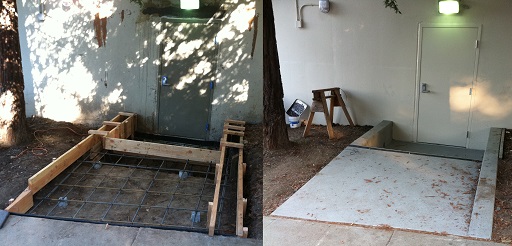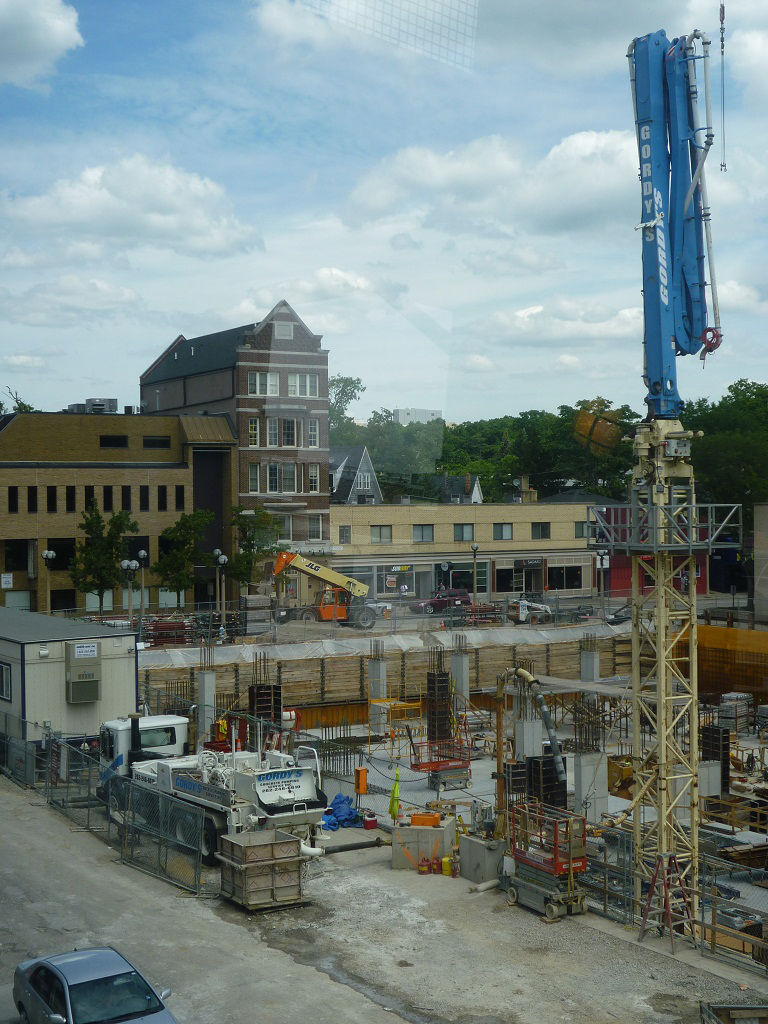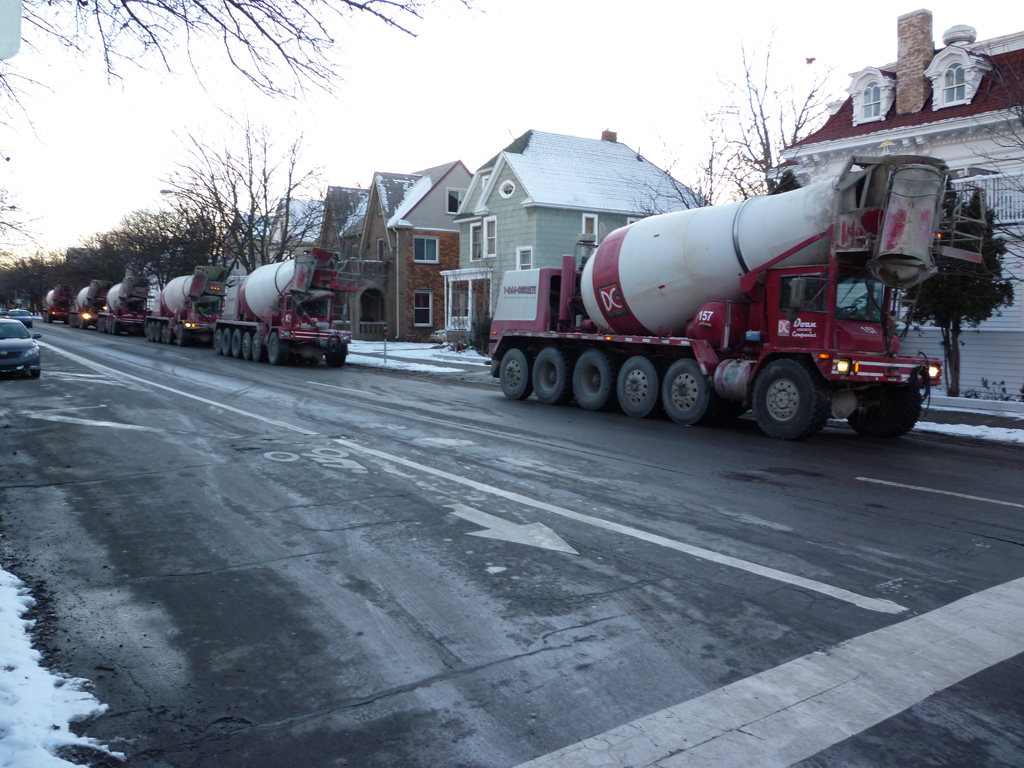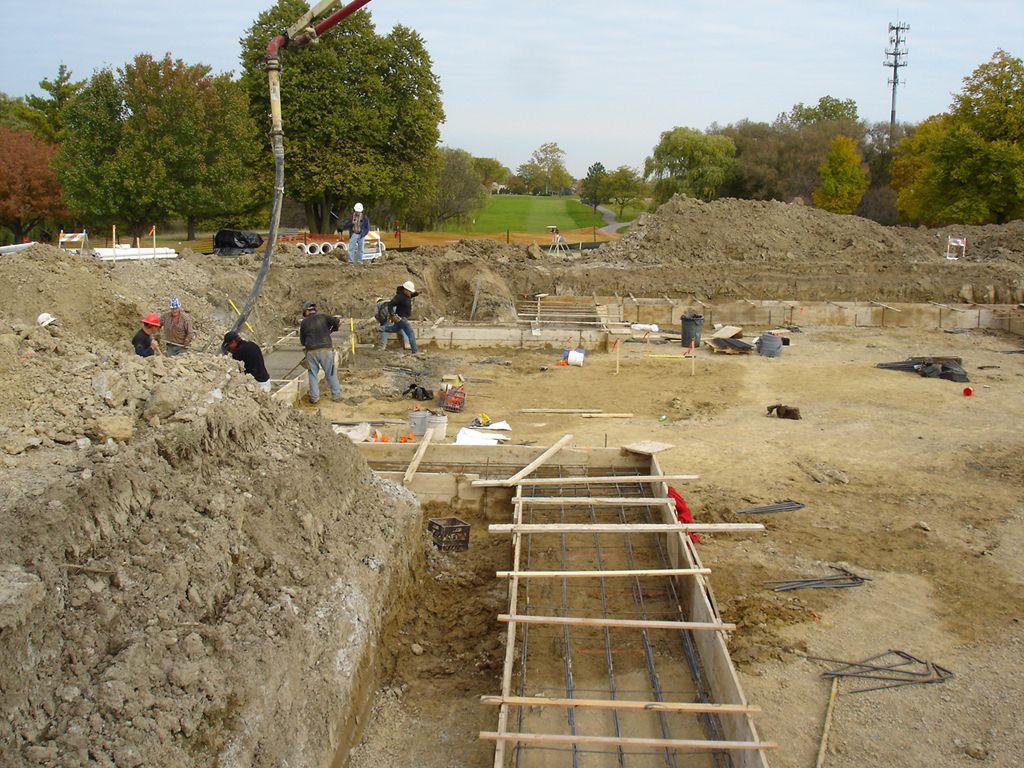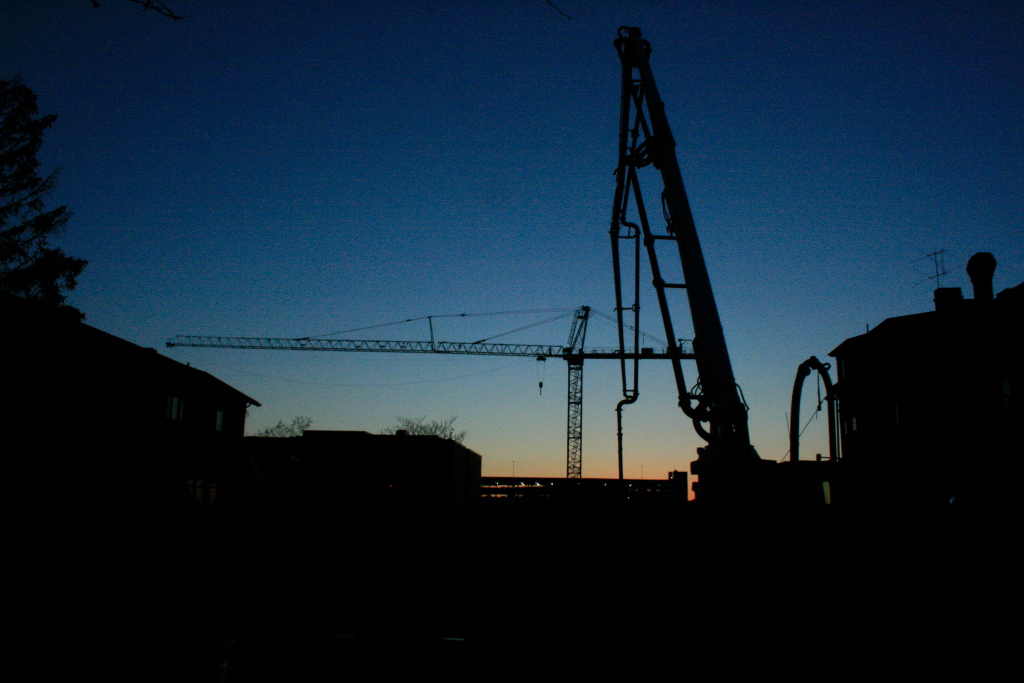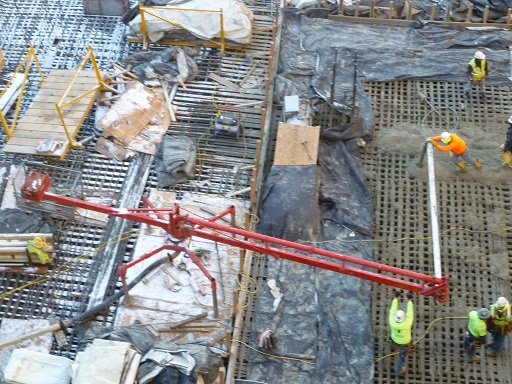
Photo Credit: Alex Mead
Seen here is a concrete placement boom. The boom is basically a small crane type structure to help hold a pipe filled with concrete with the goal of making the placement of concrete easier. The end of the pipe which is visible in the picture is being controlled by two workers, one in orange and one in florescent yellow, and is depositing concrete in the form work for a large mat foundation. The other end of the pipe is connected to a concrete pump, perhaps in a concrete pumper truck or a stand along pump. These types of booms in various types and configurations are common in large concrete pours.
